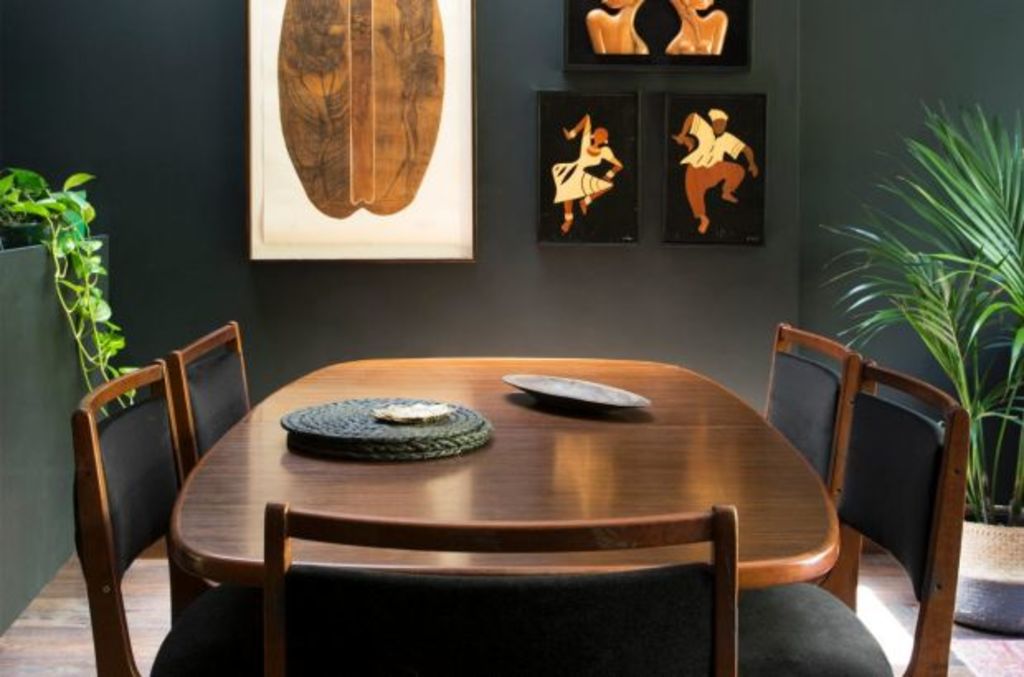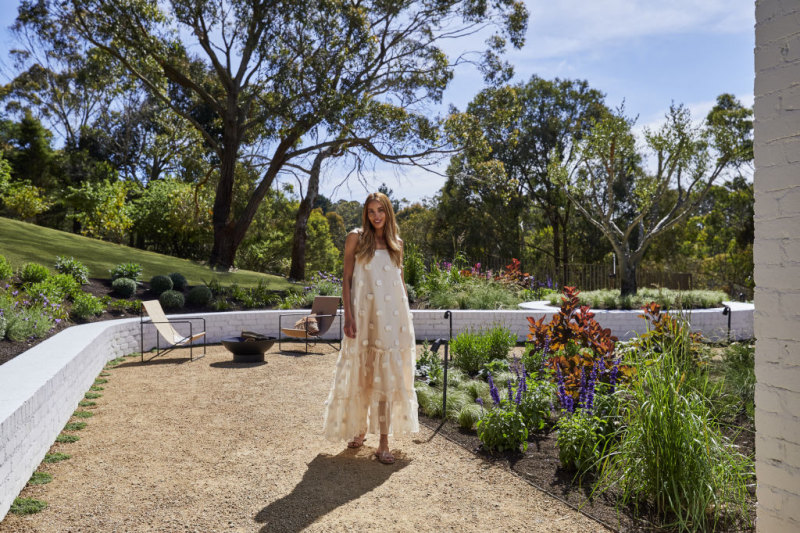The most common painting mistakes and how to avoid them

It was the classic ’70s kitchen – avocado green cabinets, yellow tiles – that first appealed. When first home buyer Samantha Page bought her two-bedroom plus study house in Fawkner, a residence that was built circa 1960s but had been given an update the following decade, she had intended on keeping the retro vibe.
“Because the settlement was delayed, by the time I had moved in the shine had gone off the fact I had a bought a house, and I just looked at it and I was like ‘this whole thing is disgusting, I regret this, this is the worst decision I have ever made’ – because I’m a little bit melodramatic!” she laughs.
While the floor plan was sound, the “horrible” dirty-green walls throughout and the dark-peach feature wall in the main bedroom had to go. The transformation in the bedroom, taking the walls back to a natural white, had made “such a difference and happened so quickly” that Page felt confident attempting the rest of the house. She’s now in the process of painting the hallway, and the green walls are becoming white.
While painting walls a similar or darker colour is fairly straightforward, going from dark to light will require undercoating.
 If you don’t use the right tinted undercoat then your depth of colour will suffer. Martina Gemmola – Haymes Paint
If you don’t use the right tinted undercoat then your depth of colour will suffer. Martina Gemmola – Haymes Paint
“Generally walls don’t need to be undercoated unless they are a really dark colour or they are brand new walls,” says Cherie Barber, the Renovating for Profit expert on Channel Ten’s The Living Room. “If those walls are a dark colour, lets say they’re a dark blue and you want to go to a stone colour, you’ll need to undercoat the walls white to drown out the blue base and then apply two coats of colour.”
The tinted undercoat (TU) scale relates to the amount of black in an undercoat and ranges from TU1 through to TU6, which is light through to dark grey. Using the one specified on the back of your paint tin will save you having to apply excess coats to give you the desired colour.
“If you don’t use the right tinted undercoat then your depth of colour will suffer, so the colour you look at on the colour card, when you put it against the wall, won’t be anything like it,” says Scott Cattell, product training manager for Haymes Paint.
This can be a common problem for DIY painters; the colour they end up with isn’t the one they envisaged. Cattell suggests taking home a sample pot and painting a couple of metre-long square patches to test.
 Experts advise that as the light changes in the room, paint colours themselves can change. Nikole Ramsay – Haymes Paint
Experts advise that as the light changes in the room, paint colours themselves can change. Nikole Ramsay – Haymes Paint
“Paint a bit in a corner, and paint a bit out in the light and have a look two or three times during the day because as the light changes in the room, often some of those colours themselves can change,” he advises. “So you might have what looks like a reasonably mellow colour on a colour chip, but once you put that in a room that’s reflecting against itself it can really bring out a striking and vibrant colour, which might be quite opposite to what you wanted to achieve.”
Barber says that often DIYers are so keen to get that colour up on the wall that they skip the most important step, which is preparing the surface.
“This actually takes the longest amount of time and it’s the one area that people skimp on,” she says. “If you’re dealing with a home that is at least 30 years old then you’re going to start having nicks and divets in your wall and over time buildings move, so you’ll have gaps that need to be filled and that becomes more time consuming.”
For Page, her walls were in fairly good condition so she only had a few holes to fill and sand back.
“In the lounge room there was a wall light I had removed so I will have to do a proper patch on that,” she says. This is where DIYers can get themselves into trouble, though. “Have you ever noticed on a wall where you can see where somebody has patched it? They’ve just been too quick to get the paint on and haven’t got an absolute smooth surface,” says Barber.
 Think about what your wall has been exposed to before deciding on your painting plan. Nikole Ramsay – Haymes Paint
Think about what your wall has been exposed to before deciding on your painting plan. Nikole Ramsay – Haymes Paint
Over time walls are also exposed to “a lot of things people don’t think about”, says Cattell, citing hairspray and body oils as two examples.
“So it’s always a good idea to wash your walls down with something like Uni-Kleen, which is designed to remove oils from off the surfaces,” he suggests. “Ensure you prime where you patch, that’s probably one of the other big things most people forget to do, [because] that’ll stand out in the finish.”
Using the right paint in the right place will also help achieve the right finish, he adds, “so think about what you’re going to use”. A low sheen wall paint, for instance, is not designed for the wear and tear of door frames, which are better served with a harder wearing acrylic enamel.
The Haymes Expressions range of ultra-premium interior paint for walls come in three finishes: matte, a low sheen and a semi gloss.
“They all have fors and againsts,” Cattell says. “An old surface with lots of imperfections, often you can use a matte, which will hide those things away, but then you compromise the washability of your surface. Semi-gloss is great for washing and cleaning but if you’ve got an imperfect surface then that will show. So the all rounder is the low sheen, that’s the one most people go with on their walls.”
We recommend
We thought you might like
States
Capital Cities
Capital Cities - Rentals
Popular Areas
Allhomes
More
- © 2025, CoStar Group Inc.







